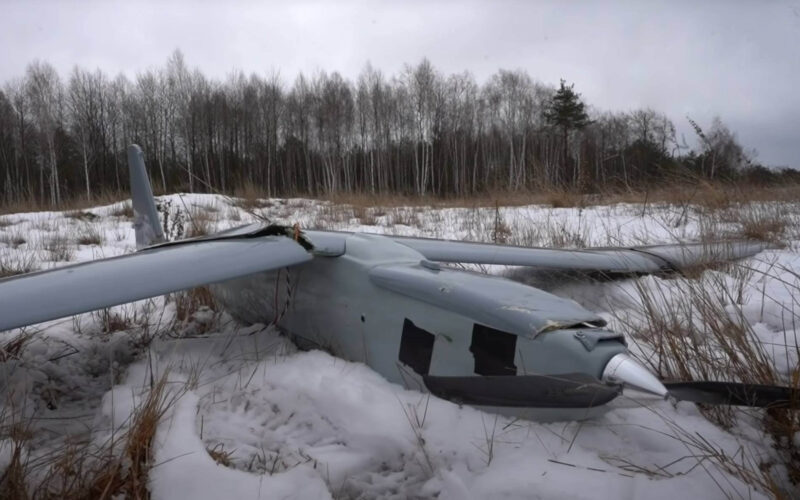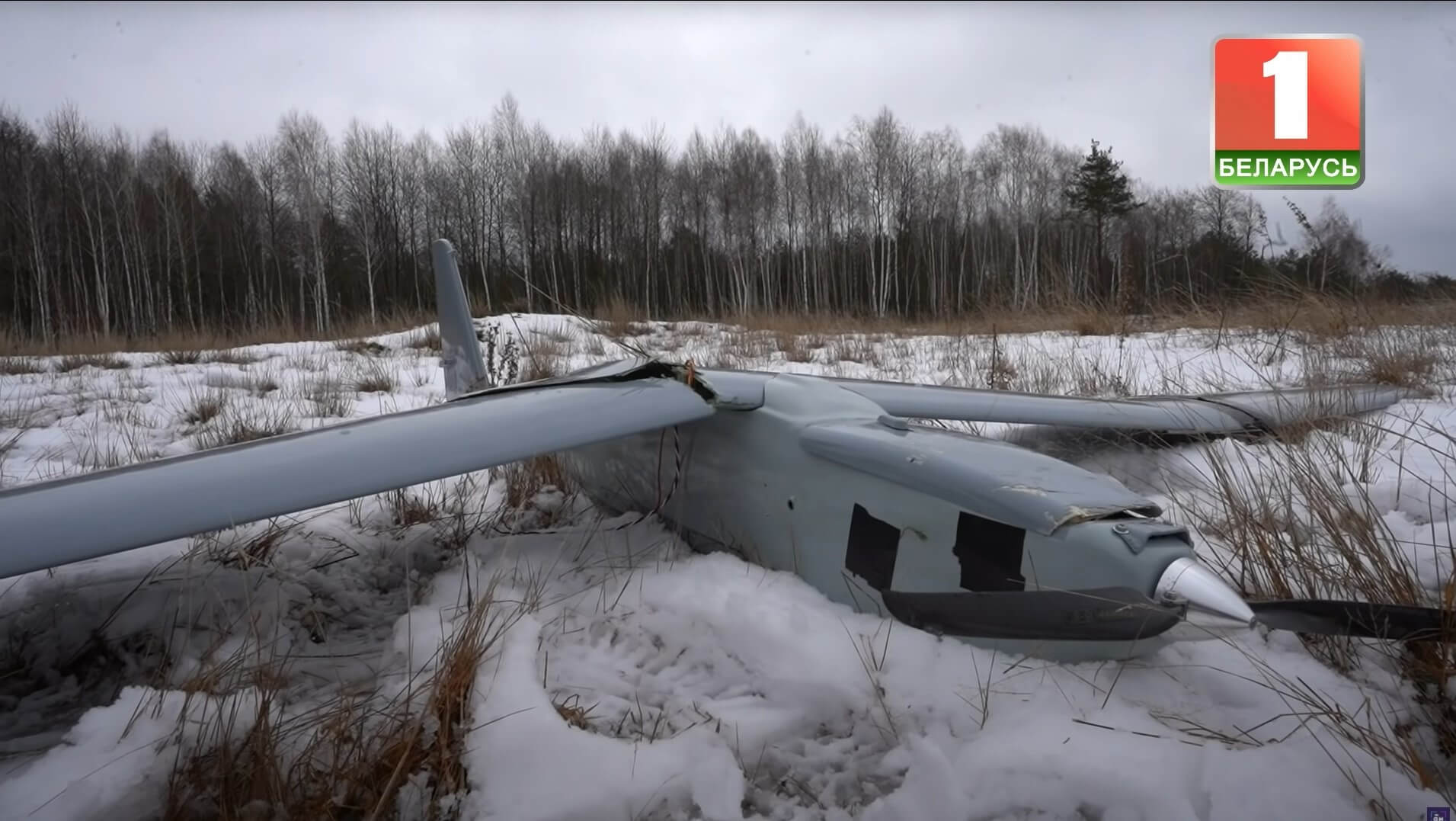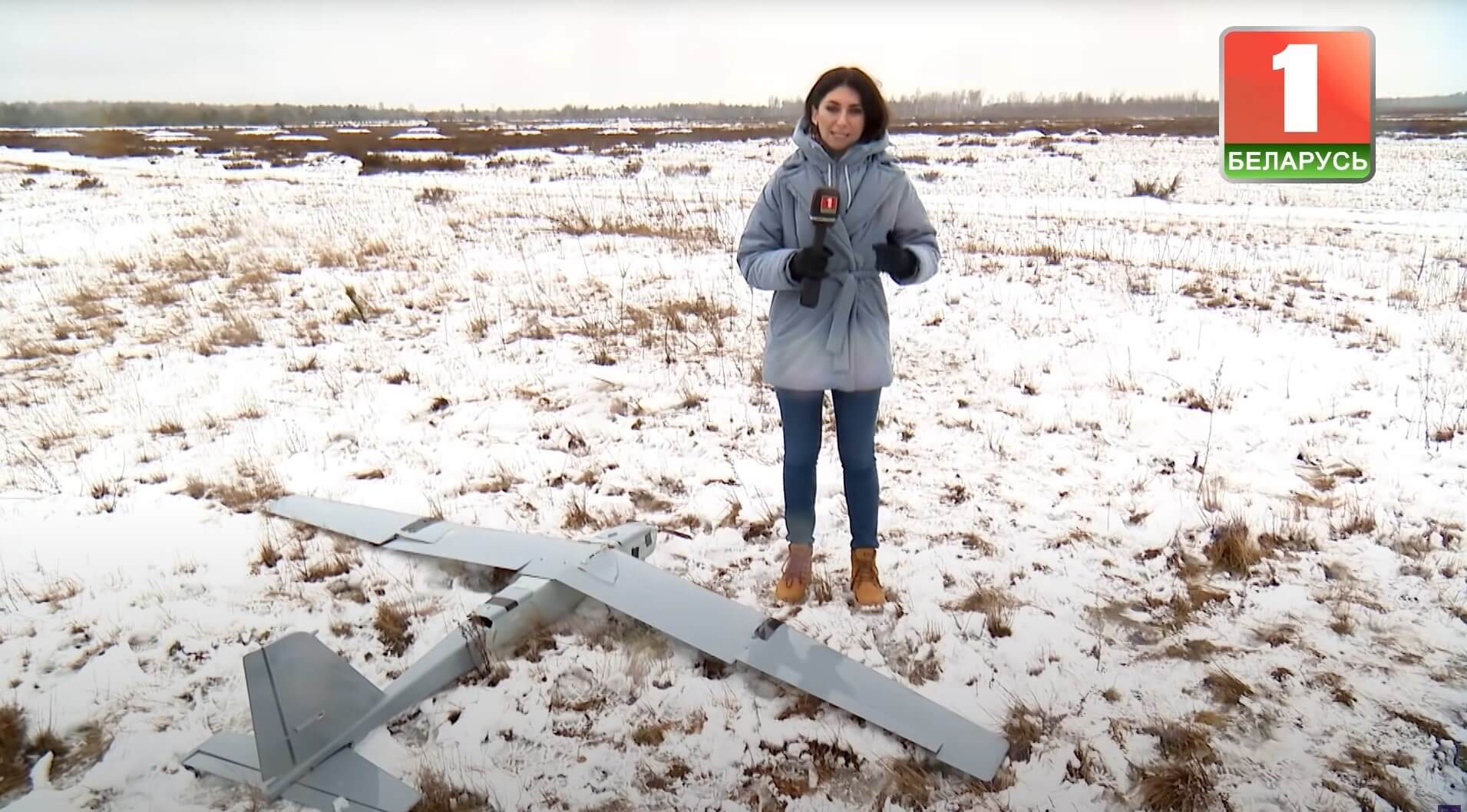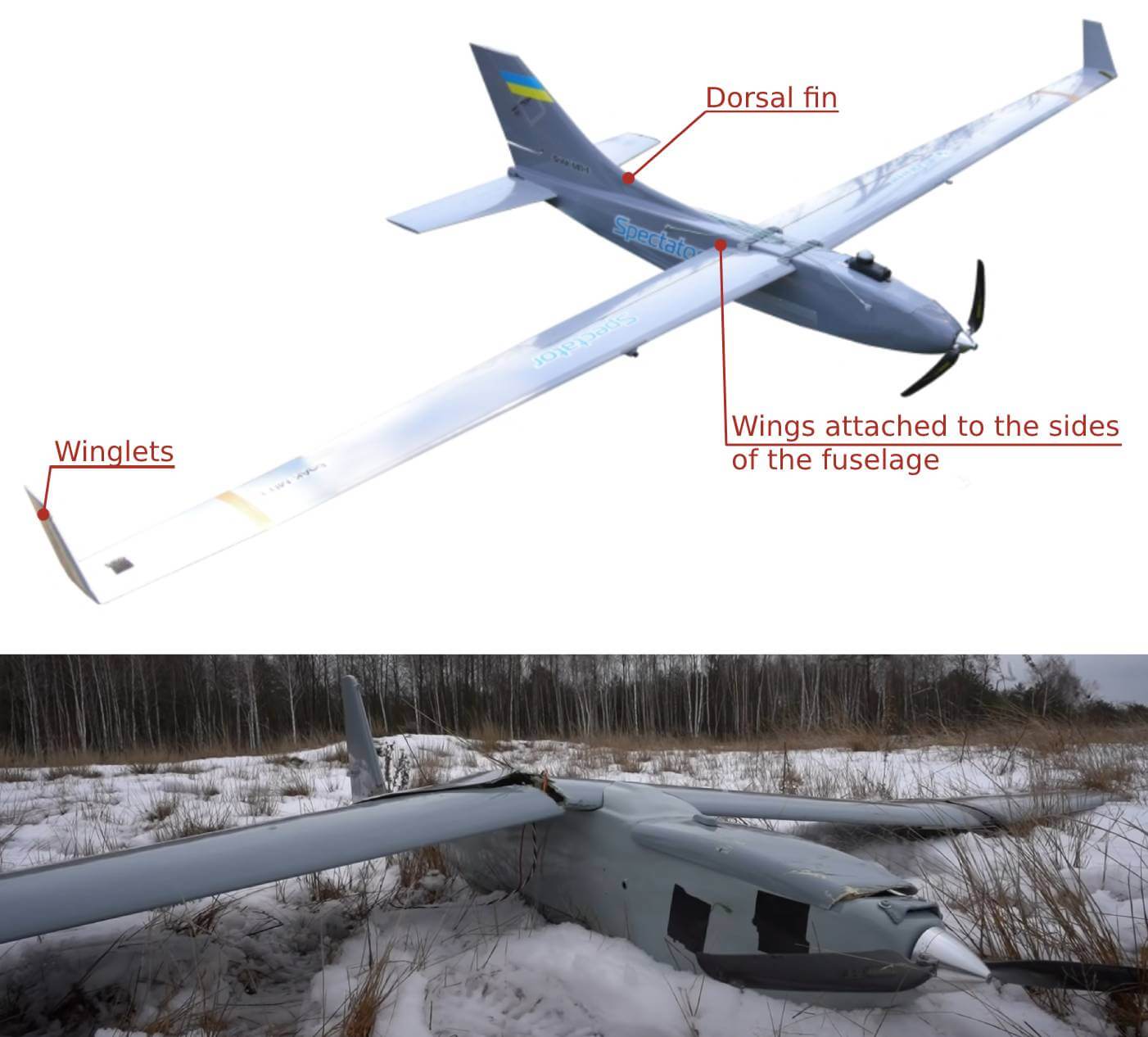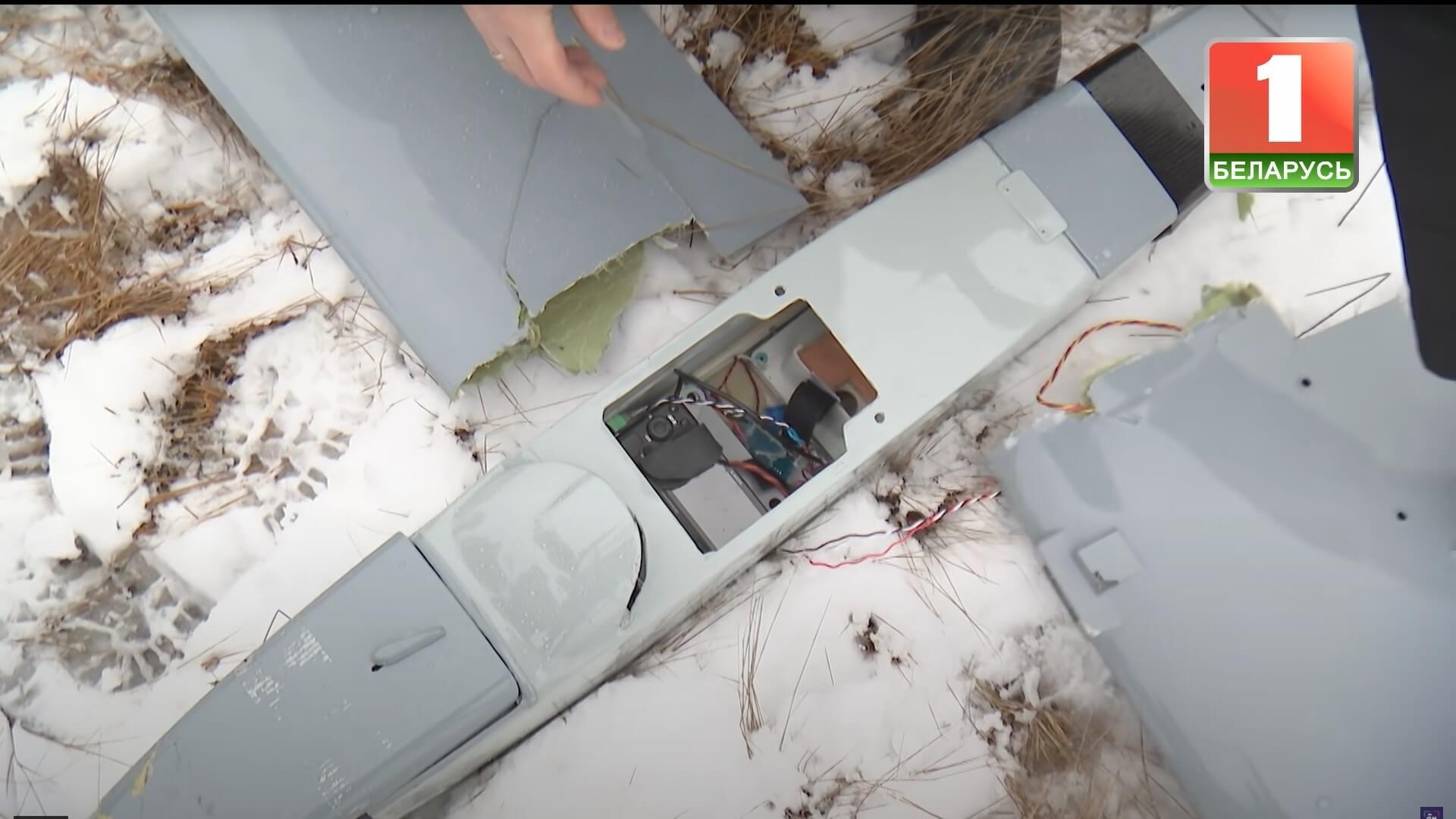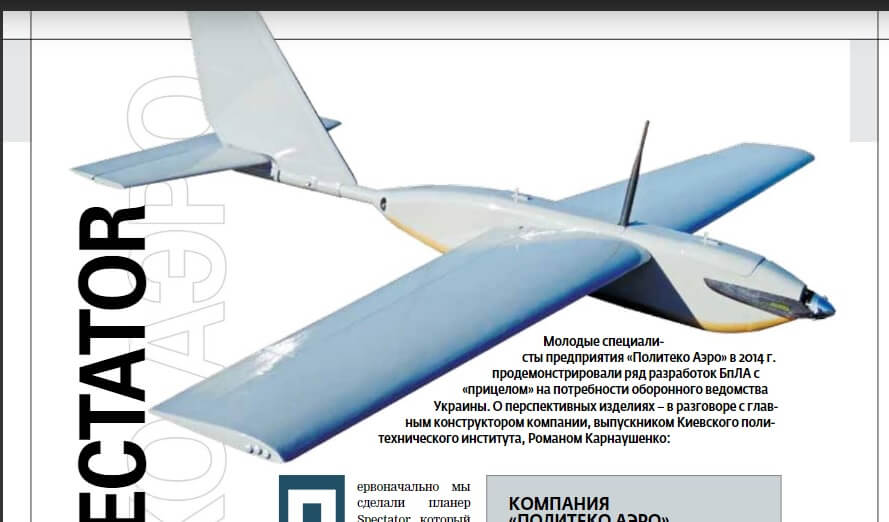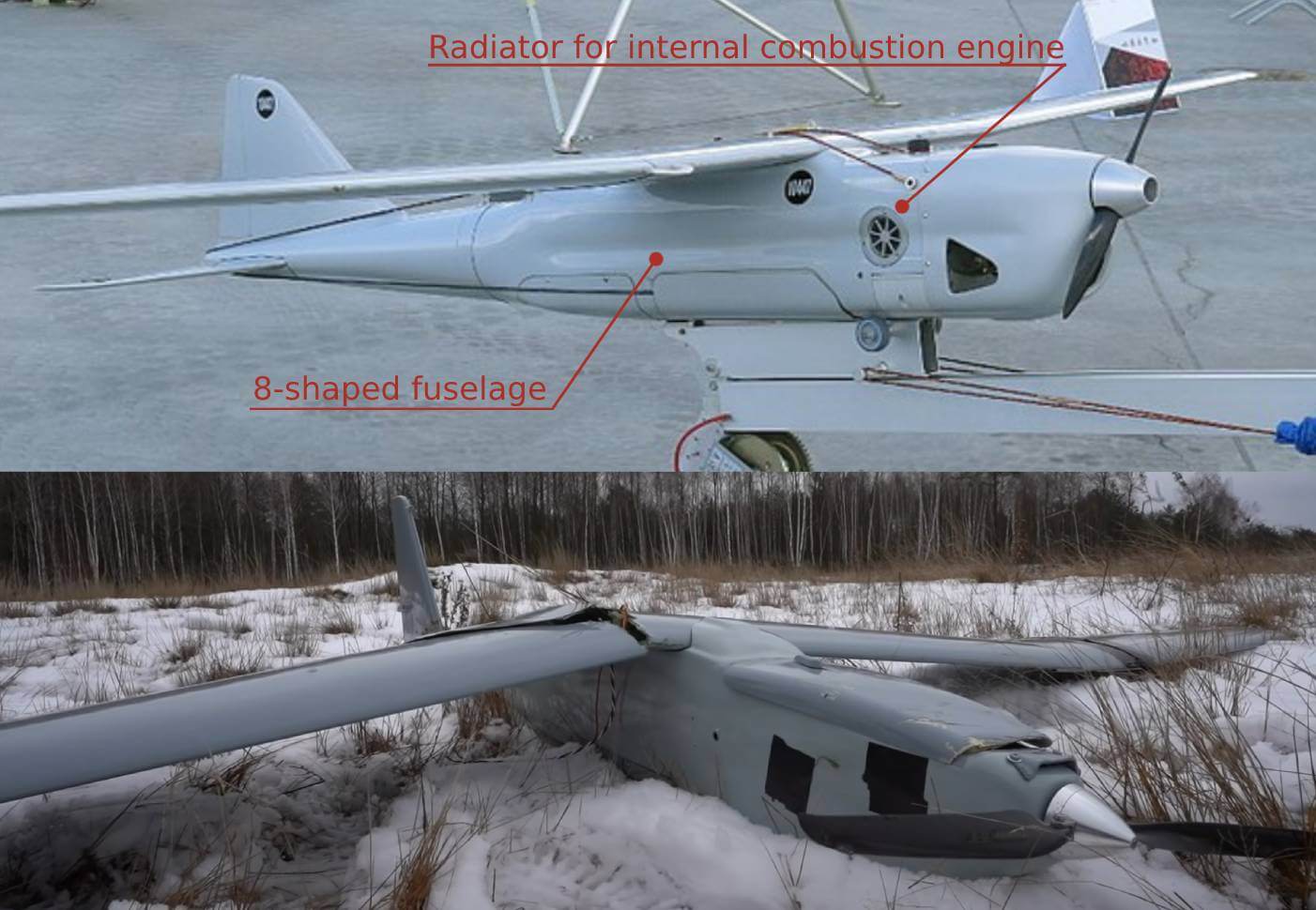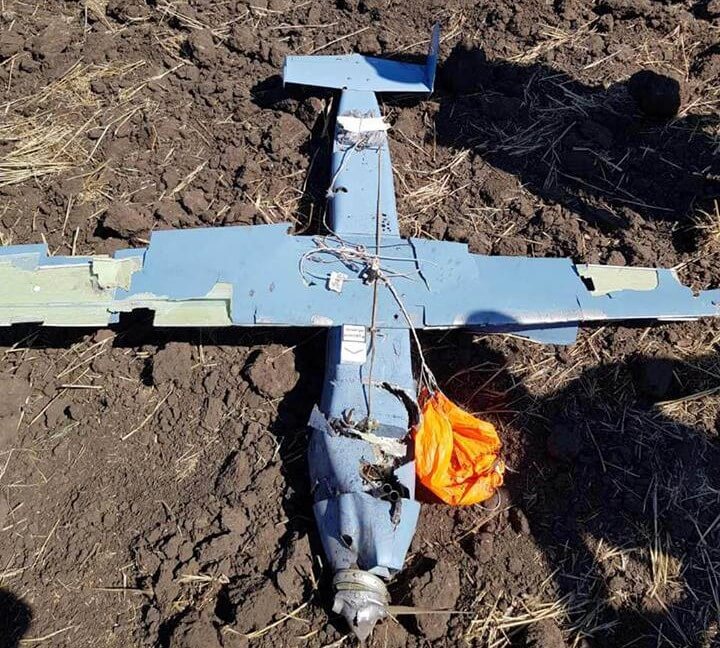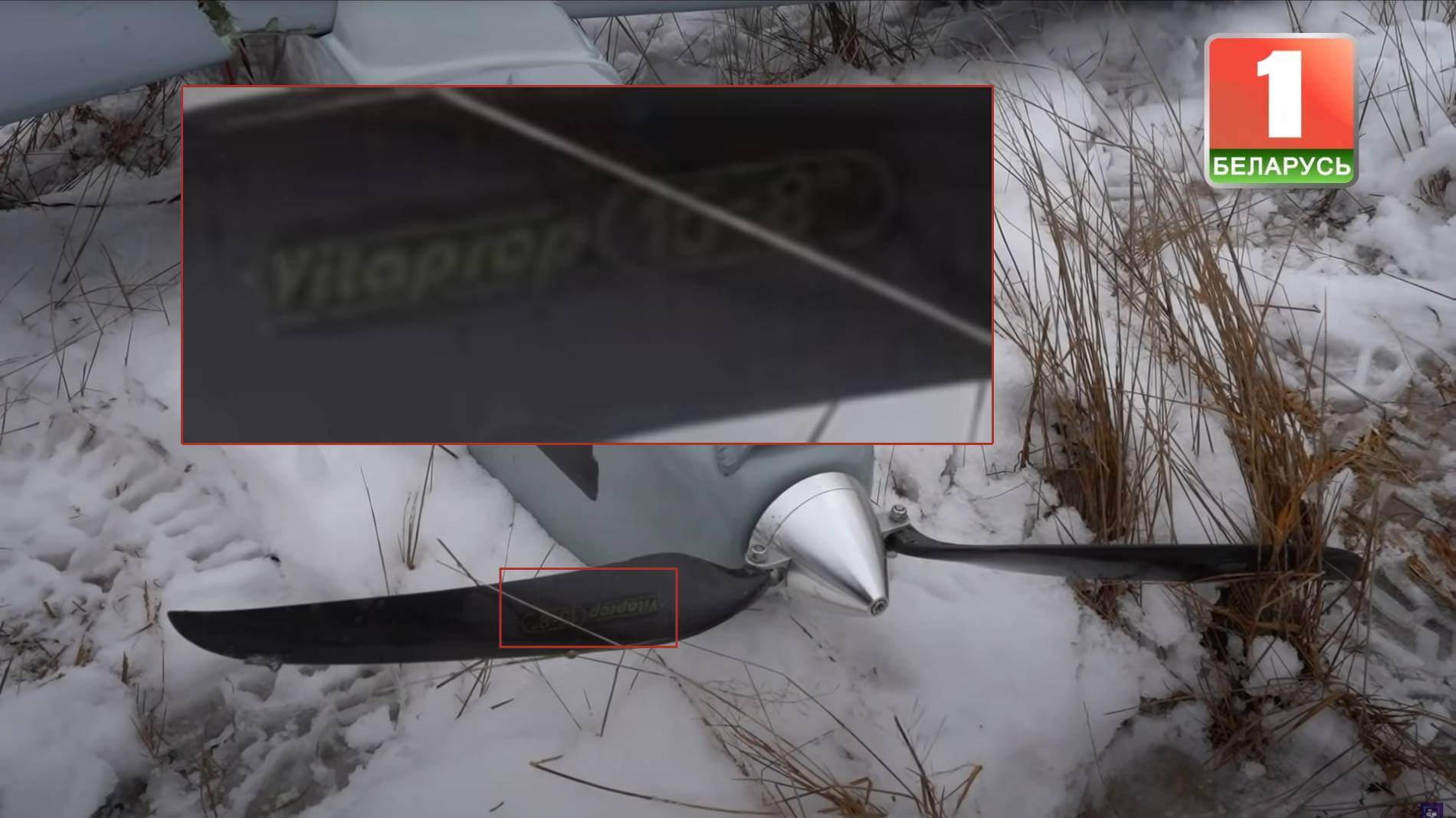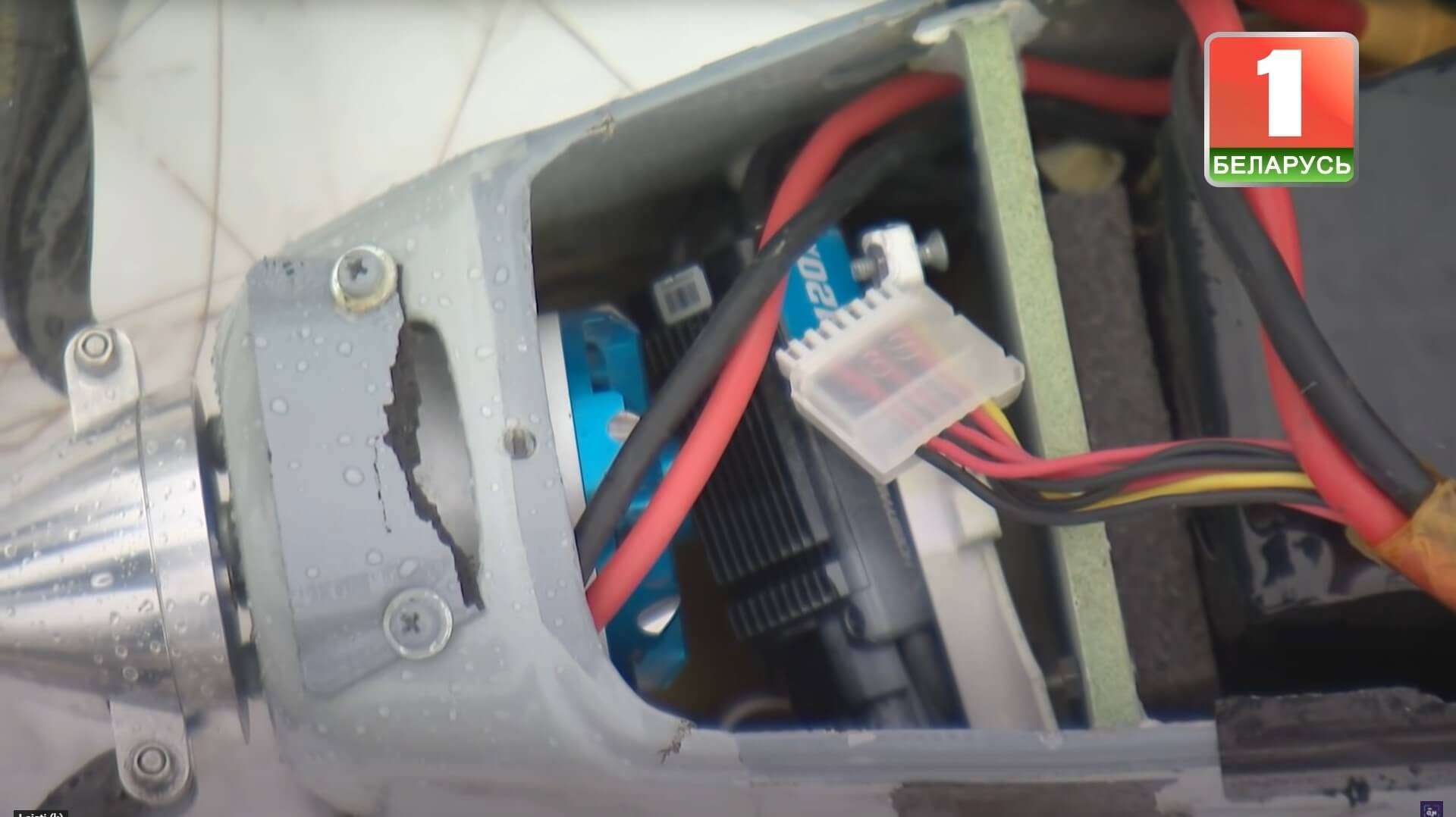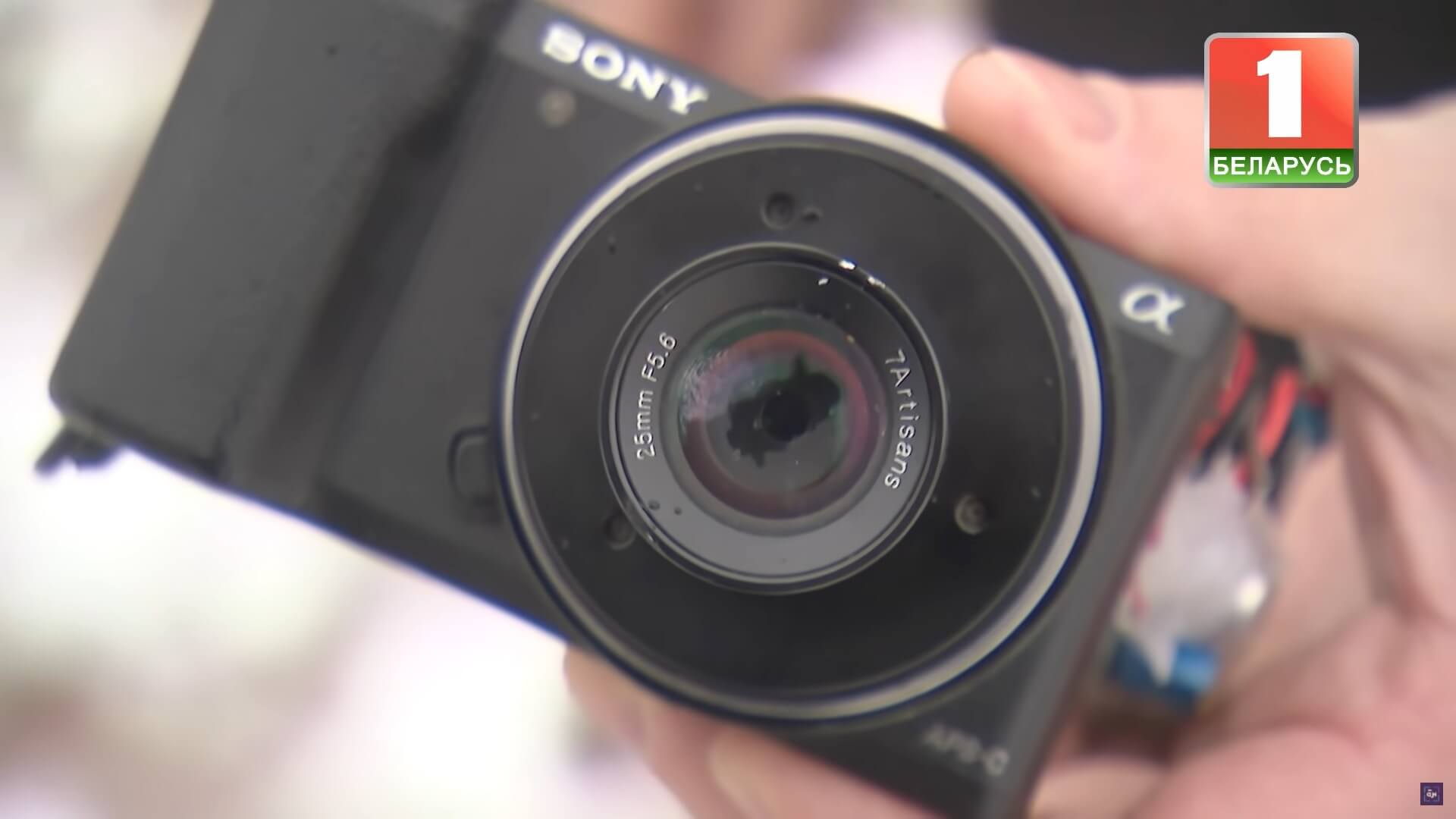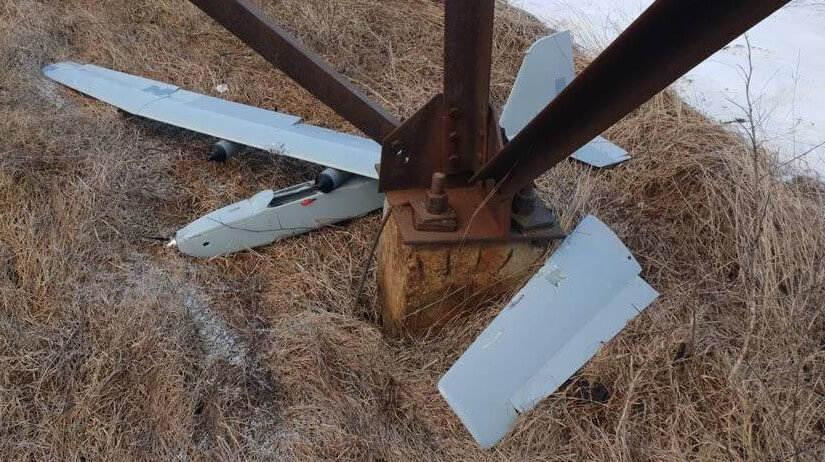On February 3, 2021, Ukraine’s ambassador to Belarus, Igor Kizim, was summoned to the Belarusian foreign ministry and handed a note of protest for a violation of the Belarusian border from Ukraine’s territory.
According to Belarusian officials, a Ukrainian unmanned aerial vehicle crossed into Belarus on January 24, 2022.
Belarusian media reported widely on the incident including the state TV channel Belarus 1 which said that the aircraft was launched at 10:58 MSK (7:58 AM GMT) near the village of Pischa, 1.7 kilometers (1 mile) from the Belarusian border.
The report went on to allege that it then flew to a training ground south of Brest, some 36 kilometers (22 miles) from the border and started taking pictures of the military base where Russian and Belarusian troops are stationed, making at least three passes and taking 228 photos.
According to an unnamed border guard interviewed by Belarusian journalists, the drone was communicating with its base throughout the flight. The guard went on to claim that its radio signals were noticed as soon as the aircraft crossed the border, which prompted Belarusian Air Defense command to issue an order to take the intruder down.
Reports suggest that it was then targeted by locally stationed radio jammers, lost signal with the base and crashed, before being found by soldiers patrolling the training grounds. The wreckage was filmed in detail by a Belarus 1 TV crew, providing a good opportunity to examine the drone’s appearance, structure and even some internal components. The following pictures give a good impression of its size, proportions and various other features.
A drone that was forced down in Belarus. (Image: Belarus 1)
A drone that was forced down in Belarus. (Image: Belarus 1)
The drone was proclaimed as Ukrainian-made by both Belarusian and Russian state media. Initially, it was identified as the Spectator M1.
The Ukrainian Spectators
But was it a Spectator M1? Well, it is similar in size and shape to the drone that was taken down in Belarus. The model was adopted by the Ukrainian military in 2019. It can carry an assortment of surveillance equipment, loiter for up to three hours and has a video transmission range of 35 kilometers, a feature often used by the Ukrainian military for various purposes.
However, there are noticeable differences between the Spectator M1 and the drone found in Belarus. For one, the Spectator M1’s wings are a different shape, with large winglets. It also features a large dorsal fin on its tail. Furthermore, the two aircraft differ in the way the wings are attached: the Spectator’s wings protrude from the sides of the fuselage, while the drone found in Belarus has a top-mounted wing, secured in a special hump with a fuselage protrusion and some bolts.
(Image: AeroTime News / Ukrainian Ministry of Defense / Belarus 1)
So, while outwardly similar, the two drones differ significantly in terms of their construction. The mounting of the wing is especially important, as it shows that the structure of the fuselage is different. The detail can be seen in the video by Belarus 1, which shows the wing being removed to reveal aircraft’s cargo bay. The cargo bay of the Spectator M1 can only be accessed through a hatch at the bottom of the fuselage, or by dismantling the whole top part of the fuselage.
(Image: Belarus 1)
The discrepancies were noticed by the Ukrainian media, prompting a response. On February 3, Russian state news agency RIA Novosti published a comment by Denis Fedutinov, a member of a think tank called the Russian International Affairs Council, and the chief editor of a journal Bespilotnaya Aviatsyia (Unmanned Aviation).
“The UAV that breached the Belarusian airspace belongs to a pre-series production of Spectator. It is one of the first variants of the Spectator, developed by the Ukrainian company Politeko Aero. It really has noticeable differences from the mass-produced Spectator M1, which is currently manufactured by a company Meridian,” Fedutinov said.
However, this explanation has several discrepancies too. The development of the Spectator started in 2014, and the aircraft went through several iterations, namely the original Spectator, which was used for military trials between 2015 and 2016, before being modernized into the Spectator M, which was finally adopted in 2017.
The Spectator M was nearly identical in its appearance to the Spectator M1. The pre-production Spectator – the one Fedutinov seemingly refers to – had some differences though.
It is hard to find a reliable source with a picture of the aircraft, which led some Ukrainian sources to allege that the Russian expert invented the model. However, in 2014 a Ukrainian journal called Defense Express (No. 12) published an in-depth look at several Ukrainian drone development programs, and one of them turns out to be the Spectator.
Early Spectator drone (Image: Defense Express, 2014, No. 14 p. 28)
The differences are easily noticeable: the pre-production Spectator features a completely different tail section than the Spectator M1, with a narrow boom. Its wings are also shorter and stubbier, and the nose section is much less streamlined.
However, the differences between it and the drone that was forced down in Belarus are obvious as well. The latter is much more similar to the mass-produced Spectator M than to this early prototype.
It could be argued that yet another version of the Ukrainian drone was manufactured – a sort of intermediary between the Spectator M and the pre-production Spectator. However, this seems unlikely. The Spectator depicted in 2014 already has its wings attached to the sides of the fuselage, hinting at a construction that makes the top-mounting of a detachable wing, seen in the Belarusian video, impossible. Ukrainian engineers either entirely redesigned the Spectator several times through its development, or the drone that was found in Belarus was a completely different model.
Ukrainian officials and the media appear to present similar arguments. The Ukrainian Ministry of Foreign Affairs’ spokesman, Oleg Nikolenko, posted a statement calling the Belarusian accusations “yet another provocation”.
In an interview with Euroradio, the Ukrainian ambassador to Belarus Igor Kizim remarked that “furthermore, as far as I know, the UAV in question is the Orlan, which was adopted only by Russia and Belarus”. This association was picked up and elaborated upon by the Ukrainian website The Insider, and subsequently published across Ukrainian and international media.
The Russian Orlans
The reference to the Orlan has some merit too. After all, just like the Spectator, the Orlan is roughly the same size, and occupies the same niche. However, contrary to the electric-powered Spectator, it has a small internal combustion engine.
This feature gives the Orlan-10, the most numerous variant of the model, loitering time of up to 10 hours. It also has many outward similarities with the drone that crashed in Belarus, including the placement of the wing on top of the fuselage, and the lack of dorsal fin.
However, the aircraft differs in other details. For one, Orlan-10 has a round fuselage, which flares into an eight-shaped cross section in the middle. It also has a less streamlined nose, large enough to accommodate an internal combustion engine, and various additions for that engine, such as a radiator.
(Image: AeroTime News / Boeyavaya mashina / Wikipedia / Belarus 1)
The drone that came down in Belarus is clearly not an Orlan-10 as it lacks all those features, and is an electrically-powered one.
However, as the name implies, Orlan-10 is a continuation of a line of models. Orlan-1 and Orlan-2 were flying-wing designs and bear no resemblance to the drone in question. Orlan-3 had a conventional fuselage but featured a top-mounted engine. There is no information about Orlans 4 to 9, although we can assume they bore a resemblance to 3 and 10, if any of them existed at all. The next in line is the Orlan-30, with a rear-mounted engine and a camera pod in the nose.
It also should be noted that the Orlan-10 has several modifications with a different engine housing, a small dorsal fin, and even a different tail that has a boom reminiscent of the pre-production Spectator.
However, all known Orlans since Orlan-3 feature an internal combustion engine, which is the main feature of the model. Russia has numerous electrical-powered drones of similar size, including variants of Zastava, Eleron and Granat. However, all of them bear little resemblance to the aircraft which was downed in Belarus.
The conclusion?
We can conclude that the drone captured in Belarus on January 25 is neither a Ukrainian Spectator nor a Russian Orlan.
But this leaves us with a question of what kind of drone it actually was. Both Russia and Ukraine have scores of UAV development programs, and many of them fall into the category of light drones with wingspans of roughly three meters and ranges over 30 kilometers.
Thus, finding the exact model of the one that was captured in Belarus is not an easy task. Clearly, it is not a mass-produced one, and not one adopted for widespread military use. Both countries can be presumed to have kept some of their developments secret, though.
In the following post, a Twitter user compares the drone found in Belarus with two others captured in 2020 and 2021 near Luhansk, in the Ukrainian territory controlled by pro-Russian separatists. Neither of them resembles any model mass-produced or adopted by Ukraine.
Однозначно можно сказать, что такая крышка с запорным механизмом аналогичной конструкции не используется на российских БПЛА семейства “Орлан”, зато используется украинскими мелкосерийнымигаражными производителями дронов.
Источник: https://t.co/tIUVT7cQFq
— Станислав Валерьевич (@PussyRobbery) February 4, 2022
The user claims that the drone, captured in Belarus, is Ukrainian-made since it has an engine access hatch in the nose, a feature seen on Spectators, and one which Orlans lack. However, it must be noted that most electrically-powered drones of similar size have such a hatch, including the Russian Granat-2, as well as countless examples manufactured in other countries.
Several other incidents spring to mind. In 2016, an unknown drone crash-landed in Lithuania, not far from the border with Belarus, while an identical one was shot down over Ukraine in 2018. In 2015, a similar drone was downed near Syrian border in Turkey.
In these cases, the drones were identified as Orlan-10s and attributed to Russia (an attribution which Russia, in all cases, denied). But they differed from regular Orlans in significant ways, such as the shapes of nose and tail.
A drone downed over Ukraine in 2015 (Image: Ministry of Defence of Ukraine)
And these examples only include drones similar to the one found in Belarus in their shape and size, while the number of similar incidents that involved smaller UAVs is much larger. This shows that the region is saturated with non-mass-produced, possibly handmade, unattributed drones of all shapes and sizes.
The core of the problem
In a statement, the Lithuanian military said that the drone found in 2016 was manufactured from commercially available parts that can easily be purchased by civilians, and therefore are nearly impossible to track.
Several close-ups of the drone captured in Belarus show that is also likely to be the case. For example, the aircraft has a propeller manufactured by Vitaprop, a UK-based company. They are available for between $20 and $25 at hobby shops.
(Image: AeroTime / Belarus 1)
A look inside the fuselage reveals that the aircraft was powered by a SunnySky 420KV electric motor (made in China and retailing for just over $100 worldwide) and had a Sony Alpha a6000 mirrorless digital camera ($600 on Amazon) with a fairly classy 7Artisans lens.
(Image: Belarus1)
(Image: Belarus1)
However, the existence of commercially available parts on this drone does not necessarily mean that it’s a civilian one. Militaries worldwide use such parts regularly. For example, Ukrainian Spectator drones can sometimes be seen sporting Vitaprop propellers, as do many others.
An actual conclusion
This whole situation serves as yet another reminder of the grim realities of drone warfare. At present, it is practically impossible to reliably determine the origin of the drone captured in Belarus. Unmanned aerial vehicles are cheap, disposable and near-untraceable.
However, there is one more thing to note. On January 5, 2022, another drone was found in Eastern Ukraine, near Gnutovo village. It crashed into a transmission tower and was captured by Ukrainian soldiers. Apparently, the drone carried canisters of Soviet-era VOG-17 39 mm grenades.
Reports suggest that it was nearly identical to the aircraft captured in Belarus: from the propeller to the hump-like wing attachment mechanism to the tail. So far, it is the nearest match to the drone downed near Brest.
So, what is the truth? We may never know.
A drone captured in Ukraine on February 5 (Image: Donpress)

